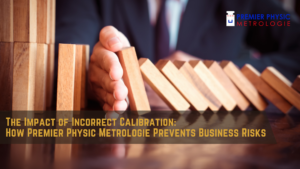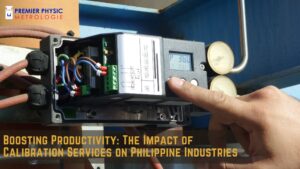In today’s technologically advanced world, precision is paramount. Across a multitude of industries, the accuracy of measurements directly impacts the quality of products, the safety of operations, and the efficiency of processes. This is where calibration—the process of comparing measurements from a device under test to a known standard—plays a crucial role. Accurate calibration ensures that instruments and systems provide reliable and consistent data, leading to improved outcomes and reduced risks. This comprehensive guide explores how different industries benefit from accurate calibration, showcasing its transformative impact through real-world examples and best practices.
The Foundation of Reliability: Calibration and its Significance:
Calibration establishes a traceable link between a measuring instrument and a recognized standard, ensuring that its readings are accurate and reliable. This process is essential for maintaining consistency, minimizing errors, and ensuring compliance with industry standards and regulations. The benefits of accurate calibration extend across various sectors, impacting everything from product quality and safety to operational efficiency and regulatory compliance.
Industries Transformed by Accurate Calibration:
- Healthcare: Ensuring Patient Safety and Diagnostic Accuracy:
- Impact: In the healthcare sector, accurate calibration of medical devices is critical for patient safety and diagnostic accuracy. From ventilators and anesthesia machines to diagnostic imaging systems and laboratory equipment, precise measurements are essential for delivering effective treatments and accurate diagnoses.
- Examples:
- Ventilators: Miscalibrated ventilators can deliver incorrect oxygen levels or pressure, potentially harming patients. Accurate calibration ensures that these devices provide precise respiratory support.
- Diagnostic Imaging: Miscalibrated MRI or CT scanners can produce inaccurate images, leading to misdiagnoses. Accurate calibration ensures that these systems provide clear and reliable images for medical professionals.
- Laboratory Equipment: Miscalibrated laboratory equipment can lead to inaccurate test results, affecting patient care. Accurate calibration ensures that these devices provide reliable data for medical analysis.
- Aerospace: Guaranteeing Flight Safety and Operational Reliability:
- Impact: In the aerospace industry, accurate calibration of aircraft instruments and systems is essential for flight safety and operational reliability. From altimeters and airspeed indicators to engine sensors and navigation systems, precise measurements are critical for ensuring safe and efficient flight operations.
- Examples:
- Altimeters: Miscalibrated altimeters can lead to inaccurate altitude readings, potentially causing collisions or navigation errors. Accurate calibration ensures that these instruments provide precise altitude data for pilots.
- Engine Sensors: Miscalibrated engine sensors can lead to inaccurate fuel consumption readings or engine performance data, affecting flight safety. Accurate calibration ensures that these sensors provide reliable data for engine monitoring and control.
- Navigation Systems: Miscalibrated navigation systems can lead to inaccurate position or course information, affecting flight paths. Accurate calibration ensures that these systems provide precise navigation data for pilots.
- Manufacturing: Enhancing Product Quality and Process Control:
- Impact: In the manufacturing sector, accurate calibration of measuring instruments and process control systems is essential for maintaining product quality and ensuring process efficiency. From dimensional measurement tools and temperature sensors to pressure gauges and flow meters, precise measurements are critical for achieving consistent product quality and optimizing manufacturing processes.
- Examples:
- Dimensional Measurement: Miscalibrated calipers or micrometers can lead to the production of parts that do not meet design specifications, affecting product quality. Accurate calibration ensures that these tools provide precise dimensional measurements.
- Temperature Sensors: Miscalibrated temperature sensors can lead to inaccurate temperature control in manufacturing processes, affecting product quality. Accurate calibration ensures that these sensors provide reliable temperature data for process control.
- Flow Meters: Miscalibrated flow meters can lead to inaccurate chemical ratios in manufacturing processes, affecting product quality and safety. Accurate calibration ensures that these meters provide precise flow measurements.
- Pharmaceuticals: Ensuring Drug Quality and Safety:
- Impact: In the pharmaceutical industry, accurate calibration of analytical instruments and process control systems is crucial for ensuring drug quality and safety. From high-performance liquid chromatography (HPLC) and mass spectrometers to temperature sensors and pressure gauges, precise measurements are essential for producing safe and effective drugs.
- Examples:
- HPLC: Miscalibrated HPLC instruments can lead to inaccurate quantification of drug components, affecting drug efficacy and safety. Accurate calibration ensures that these instruments provide precise analytical data.
- Mass Spectrometers: Miscalibrated mass spectrometers can lead to inaccurate molecular weight measurements, affecting drug purity and potency. Accurate calibration ensures that these instruments provide reliable data for drug analysis.
- Process Control: Miscalibrated pressure or temperature sensors can lead to improper chemical reactions, affecting drug quality. Accurate calibration ensures that these sensors provide reliable data for process control.
- Environmental Monitoring: Protecting Public Health and the Environment:
- Impact: In the environmental monitoring sector, accurate calibration of air and water quality monitoring instruments is essential for protecting public health and the environment. From gas analyzers and particulate matter monitors to water quality sensors and flow meters, precise measurements are critical for assessing environmental conditions and ensuring compliance with regulations.
- Examples:
- Gas Analyzers: Miscalibrated gas analyzers can fail to detect dangerous levels of pollutants, affecting public health. Accurate calibration ensures that these instruments provide reliable data for air quality monitoring.
- Water Quality Sensors: Miscalibrated water quality sensors can lead to inaccurate measurements of contaminants, affecting environmental protection efforts. Accurate calibration ensures that these sensors provide precise data for water quality monitoring.
- Flow Meters: Miscalibrated flow meters can lead to inaccurate measurements of wastewater discharge, affecting environmental compliance. Accurate calibration ensures that these meters provide reliable data for flow monitoring.
- Energy Industry: Optimizing Efficiency and Safety:
- Impact: In the energy industry, accurate calibration of power plant instrumentation and distribution systems is essential for optimizing efficiency and ensuring safety. From temperature sensors and pressure gauges to voltage testers and power analyzers, precise measurements are critical for maintaining safe and efficient energy production and distribution.
- Examples:
- Temperature Sensors: Miscalibrated temperature sensors in power plants can lead to inaccurate temperature readings, potentially causing overheating and safety hazards. Accurate calibration ensures that these sensors provide reliable data for temperature monitoring.
- Pressure Gauges: Miscalibrated pressure gauges in pipelines can lead to inaccurate pressure readings, potentially causing leaks or explosions. Accurate calibration ensures that these gauges provide precise pressure data.
- Power Analyzers: Miscalibrated power analyzers can lead to inaccurate measurements of voltage, current, and power, affecting energy efficiency. Accurate calibration ensures that these instruments provide reliable data for power monitoring.
Best Practices for Accurate Calibration:
- Traceable Standards: Use calibration standards that are traceable to national or international standards.
- Accredited Laboratories: Utilize accredited calibration laboratories that adhere to ISO/IEC 17025 standards.
- Regular Calibration Intervals: Establish appropriate calibration intervals based on the instrument’s usage, stability, and risk assessment.
- Qualified Personnel: Ensure that calibration is performed by qualified and trained personnel.
- Measurement Uncertainty Analysis: Perform measurement uncertainty analysis to assess the reliability of calibration results.
- Documentation and Record Keeping: Maintain accurate records of all calibration activities.
The Future of Calibration:
As technology continues to advance, calibration techniques are becoming more sophisticated and automated. Advancements in sensor technology, data analysis, and artificial intelligence are enabling more precise and efficient calibration processes. The increasing demand for quality, safety, and efficiency across industries will further drive the need for robust calibration practices.
Key Takeaways:
- Accurate calibration is essential for ensuring safety, quality, and efficiency across diverse industries.
- Calibration plays a critical role in healthcare, aerospace, manufacturing, pharmaceuticals, environmental monitoring, and the energy industry.
- Real-world examples demonstrate the transformative impact of accurate calibration on various applications.
- Adhering to best practices, such as using traceable standards and accredited laboratories, is crucial for achieving reliable calibration results.
- The future of calibration holds more advanced techniques and automation.
By understanding the importance of accurate calibration and implementing robust calibration practices, organizations can mitigate risks, enhance efficiency, and build trust with their customers and stakeholders.




